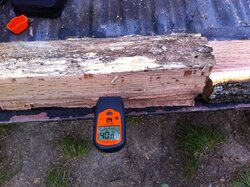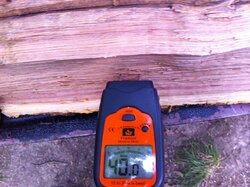well I have had a couple of fires in it. all I can say is that love wood heat. I know its not really cold out yet but I think its going to do just fine. I had a face cord delivered and im getting another face cord Monday, 2 face cords should be plenty to hold me over all winter in my barn since im no living out there. right now I have been burning up some old pallets just to get rid of them and learn how to run the stove. it was 40 degrees outside so I was running the stove with the damper most of the way closed and the air inlet open just a crack. so how do I want to run this stove once it starts to get really cold out? do I want the air inlet most of the way open and the draft open a little more but not all of the way, if its all of the way open I would be letting most of the heat out of the chimney, am I correct??
I never ran a cord wood stove, so a little advice is welcome. right now im burning scraps but I have some wonderful hardwood 2 year seasoned that im going to be burning, this stuff smells awesome. not sure what variety of wood it, but if the smell is any indication its going to put out some great heat.
I was also wondering why my neighbor's stove produces smoke and I had no smoke. they burn with a much more expensive lopi stove, I currently have that us stove logwood 1261 which no-one here seems to like but I think it seems to be pretty good for barn heater. I don't need anything exotic out there. I would not want this stove in a living space as its not a sealed unit and I could see it leaking carbon monoxide. out the barn, it has to be better then a stinky, nasty, loud torpedo heater. those things are ok as a temporary source of heat in an emergency. not to mention those things aren't cheap to run. $25 to fill the kerosene can and your lucky if that lasts 4-5 hours of smelly heat.
I never ran a cord wood stove, so a little advice is welcome. right now im burning scraps but I have some wonderful hardwood 2 year seasoned that im going to be burning, this stuff smells awesome. not sure what variety of wood it, but if the smell is any indication its going to put out some great heat.
I was also wondering why my neighbor's stove produces smoke and I had no smoke. they burn with a much more expensive lopi stove, I currently have that us stove logwood 1261 which no-one here seems to like but I think it seems to be pretty good for barn heater. I don't need anything exotic out there. I would not want this stove in a living space as its not a sealed unit and I could see it leaking carbon monoxide. out the barn, it has to be better then a stinky, nasty, loud torpedo heater. those things are ok as a temporary source of heat in an emergency. not to mention those things aren't cheap to run. $25 to fill the kerosene can and your lucky if that lasts 4-5 hours of smelly heat.


 What kind of wood is it?
What kind of wood is it?


